Winter is not yet done with us. While I can begin to imagine a time when the streams are ice free my mind still wanders back to last year's angling instead of forward. My last trip of 2013 was to Yellowstone National Park. September is a time of transformation in the park. Summer is over and winter has not yet begun but it feels more like a mix of the two seasons that anything that could rightly be called fall.
The mountain air is crisp even at midday. By evening, you've got a jacket on and temperatures plummet to damn cold as measured overnight in a sleeping bag. The park's wildlife senses something is afoot. Bull Elk bugle, cows swarm in harems and the bison have shifted from one place to another. At eight thousand feet, the Yellowstone plateau sheds summer quickly.
Below water, life moves on as well. Brook trout on the upper raches of the Gibbon have deep orange, pre-spawn bellies and the browns have begun to run up out of reservoirs to carve out redds in natal streams. While the local native fish, cutthroat, are spring spawners, they're not absent from the tides of the season. The young of year, reared in the rivers, are now running out of the many tributaries and down into Yellowstone Lake to winter over.
Unfortunately these young, whose parents grew to adulthood despite the threat of invasive lake trout, have to run a final gauntlet. The lake trout, well attuned to the migration of their prey, queue up at the mouths of streams and gorge themselves. Samples taken by the National Park Service show lake trout bellies full of young of year trout.
Lake trout, allegedly introduced into Yellowstone Lake sometime in the mid-80s, have severely affected Yellowstone cutthroat populations that were once abundant in the lake, the Yellowstone River and numerous tributaries. Since the 90s, when the first lake trout were caught, cutthroat populations have plummeted. In 1978, the Clear Creek weir sampling site logged 70,000 spawning Yellowstone cutthroat. By 2008, that number had been reduced to 500. Park scientist's research indicates that lake trout predation is the primary cause of the Yellowstone cutthroat decline though other factors such as whirling disease found in some tributaries may also have had an impact.
Cutthroat are a critical element of the Yellowstone ecosystem. Since they spawn in streams they are a ready food source for numerous predators including bears. eagles and 41 other species. Lake trout haven't replaced the cutthroat in this niche because they don't spawn in streams. Without these epic spawning runs predators have turned to other sources. Some cite recent decreases in elk herds to grizzly predation that may not otherwise have occurred if cutthroat were available to the bears.
To address this threat and to take a holistic approach to the issue of native trout, the National Park Service adopted the Native Fish Conservation Plan in 2010. This plan consolidates myriad efforts underway across the park, including lake trout eradication, and put it in the context of a long term strategy. This strategy serves to restore native fish to a large part of their traditional range while also providing a place for non-native sport fish in the ecosystem. Yellowstone Lake, however, was reserved for native Yellowstone cutthroat.
Through the combined efforts of the National Park Service, the Yellowstone Park Foundation, and Trout Unlimited a campaign to raise awareness and funding was successfully completed. As a result the Foundation was able to donate more than $1 million to the efforts, Trout Unlimited provided funding for telemetry work, and the NPS both contracted for and staffed commercial fishing vessels as the primary lake trout control method.
Since 1998 the National Park Service has been netting lake trout. The netting efforts, first by a single NPS gill netting boat and later joined by commercial contractors using both gill nets and trap nets, led to the capture and killing of over 1.4 million lake trout through 2013. The past two seasons have seen a dramatic increase in both effort and results.
In 2013, approximately 300,000 Lakers were captured and killed. The goal is to reach a tipping point beyond which the lake trout no longer form a threat to native trout populations. Scientists convened in early 2013 estimated that 57,000 net nights of effort were required to stay ahead of spawning. By the end of the season they had completed over 60,000 net nights. Not only are they going after the adults but new methods for attacking the shallow water spawning grounds are being piloted to directly reduce lake trout spawning success.
A key question remains: Is all this effort bearing fruit? The answer is tricky to get at definitively, but there are some signs. First, the yield per boat is decreasing. In 2013, four boats were netting on the lake, up from three in 2012. However, the trend in total catch appears to be up only slightly; the yield per effort appears to be decreasing. That could be due to the declining population of lakers.
Some early data suggests that cutthroat populations are on the rise. An annual survey of streams that feed the lake show that during the past two years there has been an increase in small cutthroat trout. That would seem to indicate that more trout are coming up out of the lake to successfully spawn. Also, "in lake" measures of trout are on the rise for both small and mid-sized cutthroat. These preliminary results will have to be validated with more rigorous studies, but the indicators are promising.
The Clear Creek sampling site has been rebuilt after being destroyed by floods a few years back. Later this year, with the help of some new counting technology, the NPS expects to be counting the spawning trout again. There is an expectation that there will be many more than the 500 trout counted in 2008.






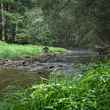
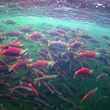







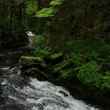
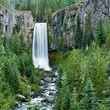




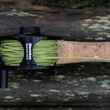



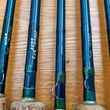


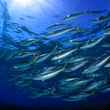
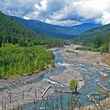
Comments